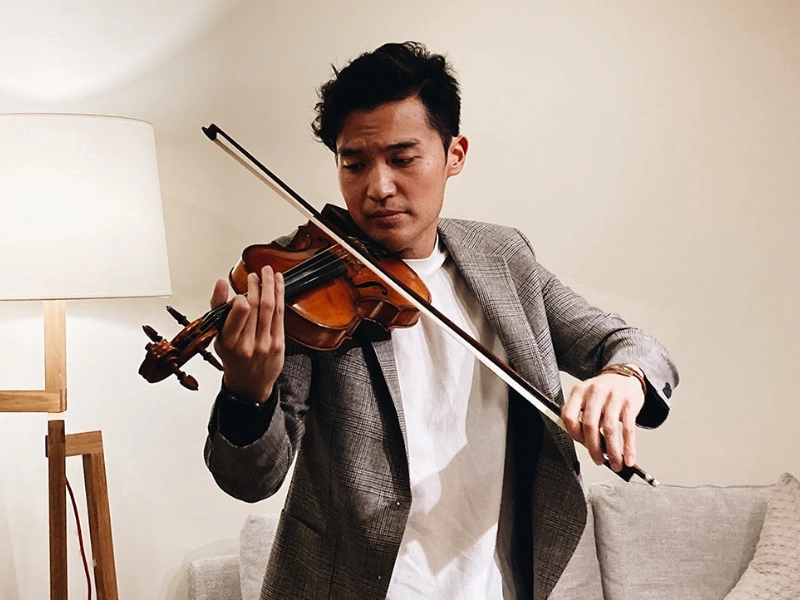The Golden Ratio: Nature's Hidden Perfect Number
Advertisement
7. The Golden Ratio in Music and Poetry: Harmony in Sound and Words

Advertisement
Although the golden ratio is most usually connected with visual arts and design, its impact also reaches the domains of music and poetry. This last part shows the broad influence of the golden ratio across many kinds of human expression by examining how this mathematical idea has been used to produce harmony in sound and rhythm.
Composers in music have applied the golden ratio to arrange their works, produce beautiful melodies, and even instrument design. Some musicologists contend that works of classical composers such as Mozart and Beethoven naturally employed golden ratio proportions. For many of Mozart's sonatas, for instance, the development part starts near the point that would split the work based on the golden ratio.
More lately, several modern composers have deliberately used the golden ratio into their compositions. Particularly in his work "Music for Strings, Percussion, and Celestine," Hungarian composer Béla Bartók is known to have used the golden ratio and Fibonacci numbers in his compositions; the climax of the first movement occurs at the phi point of the piece, so producing a sense of natural balance and progression.
The golden ratio has also affected the architectural form of musical instruments. The famous luthier Antonio Stradivari's violins are reputed to have golden ratios, which some attribute to their great sound quality. In order to claim better ergonomics and sound, certain piano makers have also experimented with keyboard designs grounded on the golden ratio.
Within the realm of popular music, the golden ratio has crept into production and songwriting. Some producers use it to decide the perfect duration of bridges, choruses, and verses or to mark important events like solos or key changes at places in the song that fit the golden ratio. Although the degree of success of this method is arguable, it shows the continuous interest with using this mathematical idea in musical composition.
The golden ratio has also shaped poetry since it emphasises rhythm and structure. It has been employed by certain writers to decide line lengths, stanza forms, or where to put important lines in a poem. Sometimes the haiku, a classic Japanese poetry form, is studied in terms of the golden ratio; its 5-7-5 syllable pattern is thought of as an approximation of golden ratio proportions.
Some academics in more general literary study have proposed that the framework of plays and novels reveals the golden ratio. They contend that important turning points or plot points usually fall at intervals based on the golden ratio, therefore separating the work. Although these studies are sometimes retroactive and controversial, they draw attention to the human inclination to search for and value balanced proportions in many kinds of art.
Using the golden ratio in poetry and music begs fascinating problems concerning the interaction between mathematical expression and art. Does the usage of this proportion really improve the aesthetic or emotional impact of a work, or is its apparent effect mainly psychological? While some contend that the golden ratio's intrinsic sense of balance and progression speaks to human experience, others say its significance in these disciplines has been exaggerated.
Whether one believes the golden ratio to be beneficial or not, the study of this idea in poetry and music shows the multidisciplinary character of this idea. It challenges our conception of what makes a piece of music or poetry aesthetically beautiful or emotionally powerful, therefore bridging the mathematical and the creative.
The application of the golden ratio in these domains also emphasises the human need to discover trends and order in the surroundings. Whether deliberately chosen by musicians or retroactively noted by experts, the golden ratio in poetry and music relates to our natural respect for balance and proportion, even in modes of expression that might appear far from mathematics.
It is evident that this mathematical idea has special power to cross fields as we keep learning about and appreciating the function of the golden ratio in poetry and music. From the visual arts to the aural and linguistic spheres, the golden ratio still captivates and motivates, providing an interesting prism through which one may see the interdependence of mathematics, nature, and human creativity.
Finally, the existence of the golden ratio throughout poetry and music emphasises its general attractiveness and adaptability. Although its precise influence is unknown, its ongoing research in these disciplines deepens our knowledge of mathematics and the arts and motivates us to look for the underlying harmonies linking many spheres of our life. The golden ratio will probably inspire poets, musicians, and artists going ahead as an eternal creative wellspring and mathematical wonder.
Advertisement
You May Like

